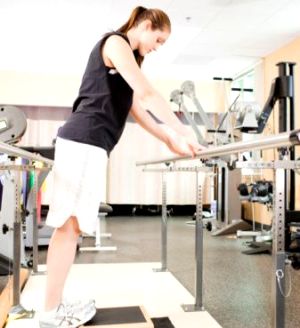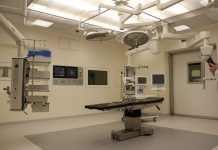Physical therapy is one of the most widely accepted forms of natural treatment used by mainstream medical professionals today.It utilizes non-invasive techniques such as exercise, heat, ice and massage;and has become its own specialty, earning its place in modern medicine.
Beginnings
Physical therapy has existed in some shape or form for thousands of years. One might consider yoga the physical therapy of Ayurveda, or Tai Chi the physical therapy of Traditional Chinese Medicine. Each has its therapeutic value and place in their respective forms of health and wellness.
 Formal physical therapy as we know it today has its roots in exercise.
Formal physical therapy as we know it today has its roots in exercise.
Hippocrates and other early doctors used exercises, massage and other manual therapies to treat patients with pain and injuries.
It wasn’t until gymnastics instructor Per Henrik Ling from Sweden began to use his techniques to treat sports injuries in the late 19th century that physical therapy became an organized profession.
Soon after, health care practitioners in Great Britain and other parts of Europe began to incorporate physical therapy into their treatment regimens.
Uses
Although physical therapy is often associated with treating sports injuries, it can actually be applied to a wide range of conditions. Physical therapy has been used to treat:
- Arthritis
- Tendinitis
- Cervical pain
- Low back pain
- Knee, hip and other joint pains
- Sciatica
- Tennis elbow
- Carpal tunnel syndrome, and
- Neurological disorders.
The scope of physical therapy now covers a number of medical specialties such as orthopaedics, neurology, cardiology and sports medicine.
Exercises
To correct anatomical problems and help facilitate healing, physical therapists rely heavily on physical exercise. Some of these exercises are universal, yet are therapeutic nonetheless. Many of these can be done at home, in conjunction with a formal treatment plan. Below are a few examples of physical therapy exercises.
Neck exercise
Just about anyone can benefit from this simple neck stretch once or twice a day. Stand with your back against a flat wall. Keep your arms and hands relaxed at your sides. Drop your chin down slightly and press the back of the neck into the wall. Hold for up to one minute. Relax, and then repeat 1 to 2 more times. This exercise helps to elongate the muscles in the back of the neck, relieve tension and improve posture.
Low back exercise
Come down onto floor, face down. Bend your elbows and place them on the floor under your shoulders. Use your forearms for support. Extend your legs one at a time behind you. Raise the legs and body off the floor, resting only on your toes and forearms. Look down at the floor and keep your spine in a straight line.
Hold this plank position for up to one minute. Rest and repeat 1 or 2 more times. This exercise helps strengthen your core muscles, especially the abdominal muscles, to support your lower back.
Shoulder stretch
For tight, sore shoulders, try this simple stretch. Find a standard-sized open doorway. Step just inside the door and place your hands on the door frame, about shoulder height, palms down, fingers pointing forward. Step through the doorway, keep the hands on the frame, elbows up and pressing backwards. You will feel a stretch across the chest and front of the shoulders.
Hold for up to one minute. Rest, then repeat 1 or 2 more times. This helps to stretch the shoulder muscles and joints, relieving tension in the shoulders and upper back.
Knee exercise
To help relieve knee pain, try this exercise using a large-diameter PVC pipe. Wrap the pipe in a towel for comfort and lie on the floor on your side. Place the pipe under the knee. Using your elbows and forearms to support your upper body, begin to gently roll your body back and forth on the pipe.
There may be a little discomfort at first, but this should ease as the knee joint loosens up. Try this for 30 seconds to one minute, then repeat on the opposite side.
Caveats
Not all physical therapists are equal. Some health care professionals may offer exercise treatment plans that are similar to physical therapy. These are not necessarily physical therapies. Be sure and ask for credentials. A licensed physical therapist will have completed a Masters, and possibly a Doctorate degree program in physical therapy.
They use the designation, PT and are licensed in their profession. Beware of practitioners who practice without a license. Many exercises, if not done properly, can cause serious injury. Talk to your medical doctor if interested in a physical therapy program.










